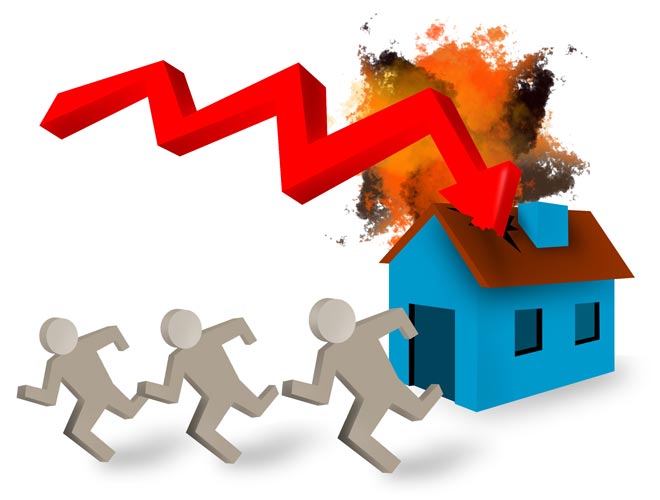From The Australian Financial Review.
Record numbers of Australian households face mortgage stress as large loans and rising interest rates start to bite, according to detailed analysis of lending, repayments and household incomes.
Affluent suburban postcodes feature among an estimated 1000 households a week expected to face mortgage default over the next 12 months, the analysis reveals.
“Debt stress momentum is unprecedented,” according to Martin North, principal of research firm Digital Finance Analytics, who has been doing the survey for more than 15 years.
“This is not just about mortgage battlers. It is also hitting the households with bigger incomes and more leverage. It is worrisome,” Mr North said. Numbers of borrowers in severe distress has increased by about one-third to about 32,000 in the past 12 months, he said.
Concern that 767,000 households – or one-in-four across the nation – are facing financial distress follows last month’s warning by the Reserve Bank of Australia about increasing family “vulnerability” caused by soaring property prices, particularly in Melbourne and Sydney.
Reserve Bank assistant governor Michele Bullock said regulators may be forced to impose even heavier restraints on lenders to prevent the property market becoming the trigger for a disruptive financial crisis, said Reserve Bank assistant governor Michele Bullock.
Ms Bullock conceded that the effect of so-called macroprudential regulations imposed on the banks in 2015 to curb investor lending may be fading.
It also follows the Australian Securities and Investments Commission discovery that about 1.5 million recent loan applications matched minimum financial requirements, triggering concerns about lax lending standards.
Other prudential regulators are warning about the need to control interest-only lending because of concerns borrowers’ lack strategies for repaying principals, increasing vulnerability to financial stresses.
Digital Finance Analytics’ report is based on information from 52,000 household surveys and public data from the Reserve Bank of Australia, Australian Bureau of Statistics, Australian Prudential Regulation Authority and information from lenders and aggregators, which are companies that act as intermediaries between mortgage brokers and lenders.
Households are “stressed” when income does not cover ongoing costs, rather than identifying a percentage of income committed to mortgage repayments, such as 30 per cent of after-tax income.
Those in “severe distress” are unable to meet repayments from current income, which means they have to cut back on spending or rely on credit, refinancing, loan restructuring or selling their house.
Mortgage holders under “severe distress” are more likely to seeking hardship assistance and are often forced to sell.
“Stressed households are less likely to spend, which acts as a drag anchor on future economic growth,” said Mr North. “The number of households impacted are economically significant, especially as household debt continues to climb to new record levels.”
However lenders would be expected able to ride out a spike in arrears because they can foreclose on properties whose value has been inflated by unprecedented price growth.
State government budgets in the nation’s most populous states and territories have been boosted significantly by stamp duty charged on property transactions.
About 32,000 households are in severe distress, the analysis reveals. An additional 10,500 households in the suburban mainstream are in risk of default.
Other vulnerable community segments at risk of default include young growing families, the highly leveraged young ‘affluent’.
Most lenders are increasing rates for investors and toughening lending terms and conditions by increasing deposits and demanding more evidence that loans can be comfortably serviced by borrowers.
Commonwealth Bank of Australia, Westpac, National Australia Bank and Australian and New Zealand Banking Group have all raised investor rates in recent weeks.
Lenders are describing their strategy of slugging interest-only investors and easing pressure on principal and interest borrowers as the “new normal” because it differentiates between classes of borrowers as directed by regulators.


One thought on “Record numbers under mortgage stress”